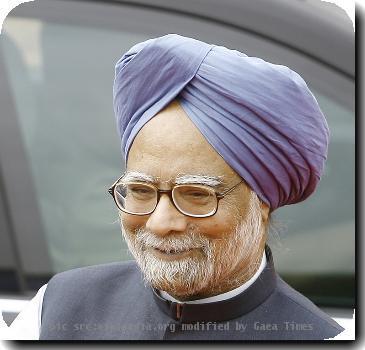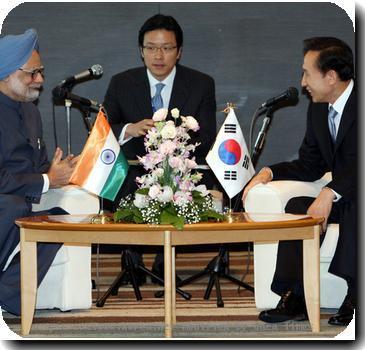Police say at least 8 protesters killed in clashes with troops in Kashmir; dozens wounded
By Aijaz Hussain, APMonday, September 13, 2010
India forces battle Kashmiris in streets; 8 killed
SRINAGAR, India — Police say at least eight protesters have been killed in clashes with troops in Kashmir that have been partly fueled by a report of a Quran being desecrated in the United States.
The death toll Monday was the highest in the last three months of separatist protests in the disputed region.
Tens of thousands of violent anti-Indian demonstrators ignored a curfew and flooded the streets, burning government buildings and throwing rocks at police stations.
A police officer said security forces shot at some of the crowds, killing eight people and wounding dozens more. The officer spoke on condition of anonymity because he was not authorized to speak with media.
THIS IS A BREAKING NEWS UPDATE. Check back soon for further information. AP’s earlier story is below.
Indian forces battled Kashmiri protesters in the streets of the disputed territory Monday in demonstrations fueled in part by a report of a Quran being desecrated in the United States. Two people were killed.
Tens of thousands of protesters took to the streets despite a rigid curfew clamped across the region, chanting, “Go India, go back. We want freedom.” Indian officials are searching for a way to end three months of deadly confrontations with separatists, while troops have orders to shoot on sight anyone who defies the region’s curfew.
In the town of Bandipore, paramilitary troops fired on rock-throwing protesters, killing one, while at least eight other protesters were wounded in clashes across Kashmir, said a police officer who spoke on condition of anonymity because he was not authorized to speak with media.
The protests Monday were inflamed by reports on the Iranian state-run channel Press TV that the Quran was desecrated over the weekend in the United States.
Though a Florida pastor called off his plans to burn the Muslim holy book, the channel showed footage of a different man destroying a book described as a Quran.
Protesters in Kashmir chanted “Down with America” and “Down with Israel.”
In the town of Budgam, troops tried to disperse the demonstrators with tear gas and baton charges but began firing into the crowd after protesters attacked a police station with rocks, the police officer said. One protester was killed and at least 20 others were wounded, some critically, the officer said.
Protesters burned at least four government buildings as well as a schoolhouse in the town of Tangmarg.
In New Delhi, Prime Minister Manmohan Singh said India was searching for a peaceful resolution.
“We are willing to talk to every person or group which abjures violence, within the framework of our constitution,” Singh said in his speech to top army commanders.
Singh’s statement came hours ahead of a meeting of top Cabinet ministers that is expected to decide whether to lift the Armed Forces Special Powers Act - which gives sweeping powers to security forces in Kashmir - as a goodwill gesture in parts of the territory that have been relatively peaceful.
Some government officials strongly oppose the move as premature, pointing to the flare-up in violence in the Himalayan region over the weekend as justification for intensifying the crackdown.
The region has been roiled for months by protests. The demonstrations often descend into clashes with government forces and troops have often resorted to firing on the crowds to quell the unrest. They have killed at least 71 people this summer - mostly teenage boys and young men in their 20s - and the deaths tend to fuel the next round of protests.
Anger at India runs deep in Kashmir, which is divided between India and Pakistan and claimed in its entirety by both countries. The mainly Muslim protesters reject rule by Hindu-dominated India and want independence or a merger with predominantly Muslim Pakistan.
The current unrest is reminiscent of the late 1980s, when protests against New Delhi’s rule sparked an armed conflict that has so far killed more than 68,000 people, mostly civilians.
Singh said the grievances of the youth of Kashmir have to be addressed.
“We have to ensure better delivery of services and generate avenues for economic advancement for the people of that state,” he said.
However, Kashmiris main complaints are not over economics, but rather the presence of hundreds of thousands of Indian troops in the region, the use of harsh security laws there and the lack of progress toward independence.
Syed Ali Shah Geelani, a key separatist leader, said lifting the security laws would not satisfy Kashmiris. “We want end to Indian occupation here and have already laid out our proposal for initiating a dialogue,” he said.
This weekend’s violence began when thousands of protesters marched through the streets of the region’s main city, Srinagar, on Saturday following a special prayer marking the end of the Muslim fasting month of Ramadan. Some in the group later attacked and burned a building housing the offices of the state police and electricity department.
In response, police accused separatist leader Mirwaiz Umar Farooq, who had called for the march, of treason, further enraging protesters, who then stoned the home of the state education minister.
On Monday, with orders to shoot-on-sight any protesters defying the curfew, armored vehicles patrolled the streets and security forces used steel and barbed-wire barricades to seal off public squares and neighborhoods in Srinagar.
Security forces did not allow journalists to move in Srinagar despite curfew passes issued by the government.
Sheikh Imran, a local reporter in Srinagar, said troops beat him up, even though he showed them his pass.
Tags: Asia, India, Kashmir, Manmohan Singh, Municipal Governments, New Delhi, North America, Pakistan, Protests And Demonstrations, South Asia, Srinagar, Territorial Disputes, United States


